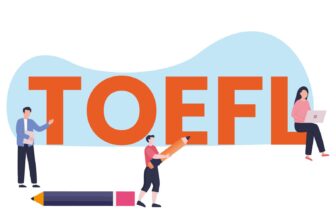
A strong essay ending convinces the reader to buy your perspective. It leaves a memorable impression on the mind of the reader, opening the room for further discussion. It determines the value of all the arguments, data, and Literature Review you have done in the body of your paper.
While the ending or conclusion holds so much power, it is one of the shortest chapters or sections of an essay. The ending will also demonstrate your scholarly skills, especially the ability to connect the hypothesis developed at the beginning of your paper to the conclusion you draw in the end.
The conclusion connects all the ideas you have discussed in your paper. It requires a very critical mind that can relate ideas and paint a logical picture of the discussion based on the facts presented. It determines whether a reader will return to your paper for reference in the future or not.
Writing an essay conclusion follows the regular academic writing rules. You must use the correct grammar and accurately format the chapter. Here are the main considerations to make when writing your conclusion.
Table of Contents
1. Revisit your introduction

Source: homeworkhelpglobal.com
The introduction is the epicenter of any essay. The introduction gives a reader the reason to peruse through your paper. At the same time, it sets the trajectory that the discussion will take. Consequently, it will determine the kind of conclusion you make in your essay.
Revisiting the introduction is meant to remind the reader about your main point. The point is captured in the thesis question or thesis statement. It is especially important to remember the thesis statement because it has to be justified by the data and Literature Review in your paper. By reminding the reader, you can revisit the data to see whether it tallying.
Do not be tempted to repeat the introduction or thesis statement word for word. The repetition is done as a reference and connected to the discussion that has just ended in the body of your paper. You will later connect the statement with the conclusion you intend to make based on the data you have unearthed.
The link between the introductory statement and your closing remark should be as strong as possible. Any disconnect between these two elements will result in an illogical conclusion. It will appear as though your paper took a trajectory at the beginning only to deviate towards the end.
Restating and reevaluating the introduction defines the strength of your discussion. Mention the original ideas in your discussion to convince the reader that you remained on track. The reminder is the best way to tie down your argument from the introduction to the conclusion.
2. Remember your discussion

Source: unsplash.com
Revisit the ideas you discussed in the body of your paper. The conclusion is meant to summarize these ideas. The reader does not expect any new idea in your conclusion.
Revisit your ideas by stating them without a discussion. The statement should be followed by a response generated from the data and Literature Review sections of your paper. The approach ensures that no new ideas are introduced in the conclusion.
The conclusion is usually short and precise. It has no room for discussion. The assumption is that all points were discussed in the body of your essay. The introduction of a new idea or perspective would demand fresh data and collaboration through literature review. For this reason, you should only focus on the ideas you discussed in the body of your paper. At the same time, you should only mention and reply to these ideas.
One of the ways to remember your discussion is by making a logical conclusion. The points presented in the body of your essay must tally with the conclusion you make. Remember that the reader is also following the discussion. Based on the ideas and data presented, he has a conclusion in mind. Your conclusion must be aligned with his idea.
The conclusion must be one that anyone can make given the literature reviewed and the data presented. Choose the points that support your hypothesis better to increase the chances of arriving at a favorable conclusion. Deviation to other ideas will cast doubts on your critical analysis skills. The conclusion will cause the reader to disagree more than agree with your hypothesis.
3. Keep it short and sweet

Source: unsplash.com
A conclusion is short and precise. While mentioning the hypothesis, avoid going into details. It would be a repetition of your discussion section if you begin to restate the points already espoused in the body. Hire a professional essay helper from MyPaperWriter to assist you to produce the most compelling conclusion.
The conclusion is kept short by ignoring any fresh ideas that may emerge. The inclusion of new ideas will demand an explanation. It also compels you to review new literature. It is for this reason that the conclusion comes at the end of the writing process.
The conclusion requires you to restate the ideas discussed. However, keep the statements short, in the form of a question and answer. State the hypothesis and the revelation or conclusion made from the data provided. It helps the reader to deduce your conclusion easily.
4. End the essay at the end
Write the conclusion upon completion of the body of your paper. It gives you a better idea of the points you are summarizing. It also comes after polishing the introduction. Without a clear view of the ideas you are summarizing, the conclusion will be weak and misplaced.
5. Make it personal

Source: unsplash.com
While academic writing does not provide room for emotions, the conclusion should feel personal. You are making your point or stamping your authority over an issue. Use emotional words that will compel a reader to lean towards your opinion.
The emotions must be based on facts. Avoid ideas that might weaken the conclusion. Instead, choose the strongest among the points you have made. It is the personal appeal that makes your work memorable.
A conclusion will determine the send-off you give to the person reading through your paper. Make a personal appeal that will produce a memorable paper. Keep it short and logical to stamp your critical thinking as well as analytical skills.







